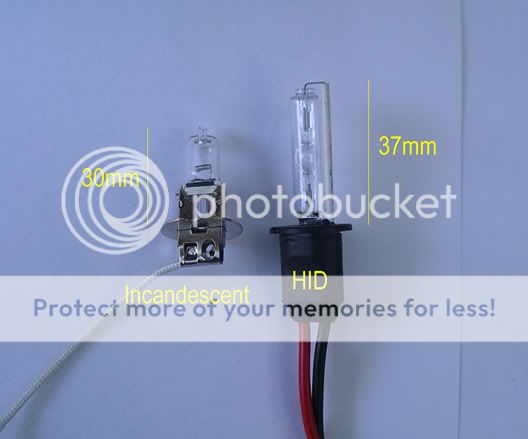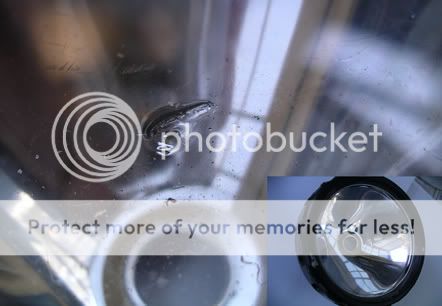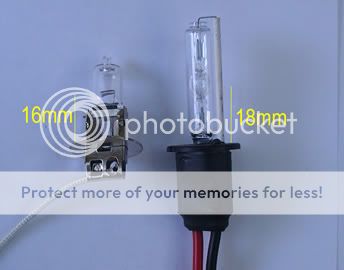You are using an out of date browser. It may not display this or other websites correctly.
You should upgrade or use an alternative browser.
You should upgrade or use an alternative browser.
Lens Material
- Thread starter Axkiker
- Start date
 Help Support Candle Power Flashlight Forum
Help Support Candle Power Flashlight Forum
Anyone experimented with Lens material ????
currently I have been using a typical hardware store lexan. It works fine however what options are out there.
Needs to allow as much light through as possible
scratch resistant
Any thoughts ???
Polycarbonate or Lexan probably is the best material so keep using it.
Polycarbonate or Lexan probably is the best material so keep using it.
I am also finding some cool stuff at flashlightlense.com
Klem
Enlightened
Perspex also works
Packhorse
Flashlight Enthusiast
Perspex is another (brand ?)name for acrylic and Lexan is another brand name for polycarbonate.
if you want as much light as possible, use Anti Reflection (AR) coated materials. These are more expensive though, and I doubt you would see the difference.
when not using AR coated materials, glass and transparent plastics are more or less comparable.
For scratch resistance, I think glass works better than acrylic, PMMA or PC, but is more difficult to work with (cut/grind).
There are also different types of lexan, each with sometimes very different properties. At work we had some samples, Lexan MARGARD was best for scratch resistance, but I think that is a brand name, not a real name of a certain material.
If you really want to get the best material, you better contact a supplier of such materials. They should have spec sheets and should be able to tell you what material is best for the purpose.
Johan
when not using AR coated materials, glass and transparent plastics are more or less comparable.
For scratch resistance, I think glass works better than acrylic, PMMA or PC, but is more difficult to work with (cut/grind).
There are also different types of lexan, each with sometimes very different properties. At work we had some samples, Lexan MARGARD was best for scratch resistance, but I think that is a brand name, not a real name of a certain material.
If you really want to get the best material, you better contact a supplier of such materials. They should have spec sheets and should be able to tell you what material is best for the purpose.
Johan
Polycarbonate itself has several variations. The common polycarbonate without any surface treatment though more impact resistant than the common acrylic is more scratch prone.
It would be a better idea to recommend something specific like "Makrolon AR" or "Lexan MARGARD" etc rather than polycarbonate. I am wiser now after buying "polycarbonate" which is "stronger than acrylic" only to find out it scratches so much easier than the common acrylic, both from my local plastic vendor.
Btw AR can also mean Abrasion Resistant besides Anti Reflection.... I think.
Just my 2cents
Cliff
It would be a better idea to recommend something specific like "Makrolon AR" or "Lexan MARGARD" etc rather than polycarbonate. I am wiser now after buying "polycarbonate" which is "stronger than acrylic" only to find out it scratches so much easier than the common acrylic, both from my local plastic vendor.
Btw AR can also mean Abrasion Resistant besides Anti Reflection.... I think.
Just my 2cents
Cliff
very well possible since optical guys often don't talk with mechanical guys, although they shouldBtw AR can also mean Abrasion Resistant besides Anti Reflection.... I think.
Hi,
I allready use PMMA for lense but for video housing lense.
I'm actualy building a lighting set with HID light, 35W, I wonder if a 8mm PMMA lense will do the job?
I have to say that I didn't find any information about the temperature of the bulb (°C or °F) I don't want to make the lense "melt" (not to sure, sorry I'm french)...
If any body can advice, that will be helpfull, Thanks Ivan.
I allready use PMMA for lense but for video housing lense.
I'm actualy building a lighting set with HID light, 35W, I wonder if a 8mm PMMA lense will do the job?
I have to say that I didn't find any information about the temperature of the bulb (°C or °F) I don't want to make the lense "melt" (not to sure, sorry I'm french)...
If any body can advice, that will be helpfull, Thanks Ivan.
I recently looked at a table of properties of transparent plastics at work, and most of them prefer to stay cooler than about 80-100°C depending on the material.
Note that if it is to be used in the water, you have a pretty good cooling system for the lens (the water ;-) )
Specific for PMMA, have a look here:
http://www.matbase.com/material/polymers/commodity/pmma/properties
service temperature is up to 90°C
I wouldn't suggest using it outside the water though.
We did a test with 50W halogen spots in a PC tube with forced air cooling, and the temperature went up to 70°C so if there is no cooling, it's likely that things will start melting.
Johan
Note that if it is to be used in the water, you have a pretty good cooling system for the lens (the water ;-) )
Specific for PMMA, have a look here:
http://www.matbase.com/material/polymers/commodity/pmma/properties
service temperature is up to 90°C
I wouldn't suggest using it outside the water though.
We did a test with 50W halogen spots in a PC tube with forced air cooling, and the temperature went up to 70°C so if there is no cooling, it's likely that things will start melting.
Johan
Klem
Enlightened
Ivan,
Even with a wide diameter lens (100-125mm) 8mm of lens is very thick. Point being...the thicker the lens, the less capable of heat transfer it is to the water outside. Too thick and it will cook on the inside while staying cool on the outside!
With synthetic lenses you want as thin as possible for the max depth you dive so as to maximise heat dissipation, yet still withstand the water pressure.
Umibuta,
Very interesting, I was under the impression polycarbonate was the strongest...I guess you learn something everyday.
On the bright side, I've read that a scratched outside lens matters less once in the water. The theory is that the scratches fill up with water and light flows once again seamlessly from one medium to another. Having said that, I've had my share of scratched lenses and to be honest I can't tell the difference.
Even with a wide diameter lens (100-125mm) 8mm of lens is very thick. Point being...the thicker the lens, the less capable of heat transfer it is to the water outside. Too thick and it will cook on the inside while staying cool on the outside!
With synthetic lenses you want as thin as possible for the max depth you dive so as to maximise heat dissipation, yet still withstand the water pressure.
Umibuta,
Very interesting, I was under the impression polycarbonate was the strongest...I guess you learn something everyday.
On the bright side, I've read that a scratched outside lens matters less once in the water. The theory is that the scratches fill up with water and light flows once again seamlessly from one medium to another. Having said that, I've had my share of scratched lenses and to be honest I can't tell the difference.
Hello,
Klem, I agree with you, I will see (buy testing) how thin I can go with my lense diameter...
jspeybro you are right and it's because I already got a halogen set with PMMA and because it's working great I was thinking using it again for my HID too (BTW, I'm still searching data about the temp of the bubl)
Because the body light will be made of aluminium or titanium, I will see if I can find a proper glass lense cut for the right diameter, around 100mm. that will also add soime weight to make it ballance.
Thanks again, Ivan
Klem, I agree with you, I will see (buy testing) how thin I can go with my lense diameter...
jspeybro you are right and it's because I already got a halogen set with PMMA and because it's working great I was thinking using it again for my HID too (BTW, I'm still searching data about the temp of the bubl)
Because the body light will be made of aluminium or titanium, I will see if I can find a proper glass lense cut for the right diameter, around 100mm. that will also add soime weight to make it ballance.
Thanks again, Ivan
Klem
Enlightened
If you want to convert a 100mm halogen reflector to HID, you might want to check two things;
1. The hot-spot of the longer HID bulb will not be in the original focal point for the halogen-designed reflector. By turning on the HID bulb and carefully moving it in the reflector you will vary the focus between wide and narrow beam. I've used washers in the past to position it for the preferred beam angle.

2. Check there is enough clearance in the reflector to take the longer HID bulb without it being too close to your synthetic lens. Here's a photo of an old 100mm reflector with 6mm perspex lens. Originally designed for shorter halogen bulbs the 35W HID bulb was almost touching the Perspex by about a millimeter. You can see where it melted the inside of the lens (even though it was only used underwater). In the time it was used it didn't leak, but I suspect it would have eventually.

1. The hot-spot of the longer HID bulb will not be in the original focal point for the halogen-designed reflector. By turning on the HID bulb and carefully moving it in the reflector you will vary the focus between wide and narrow beam. I've used washers in the past to position it for the preferred beam angle.

2. Check there is enough clearance in the reflector to take the longer HID bulb without it being too close to your synthetic lens. Here's a photo of an old 100mm reflector with 6mm perspex lens. Originally designed for shorter halogen bulbs the 35W HID bulb was almost touching the Perspex by about a millimeter. You can see where it melted the inside of the lens (even though it was only used underwater). In the time it was used it didn't leak, but I suspect it would have eventually.

Thanks Klem,
I beleve we have the same HID light... the buble is 42mm long and my beam is made of aluminium and about 69 mm deep, see : http://shop.dev-pein.de/Selbstbau/ALU-Reflektor-Flood-114mm.html?listtype=search&searchparam=230726
I will have around 25mm from the top of th bulb to the lense, so it could be fine, but I'm still going to make some test to be sure...
For the focus, washers is a good idea but I will make a "bracket" made in delrin/aluminium on my lathe, after founding the good position of the lighting point of the bubl in the reflector.
Thanks for helping me on this one, I realy apreciate.
Ivan
I beleve we have the same HID light... the buble is 42mm long and my beam is made of aluminium and about 69 mm deep, see : http://shop.dev-pein.de/Selbstbau/ALU-Reflektor-Flood-114mm.html?listtype=search&searchparam=230726
I will have around 25mm from the top of th bulb to the lense, so it could be fine, but I'm still going to make some test to be sure...
For the focus, washers is a good idea but I will make a "bracket" made in delrin/aluminium on my lathe, after founding the good position of the lighting point of the bubl in the reflector.
Thanks for helping me on this one, I realy apreciate.
Ivan
lucca brassi
Enlightened
I have HID bulb (new ) same size as halogen bulb ( I sell them : 2 balast (1 new (3 times fired ; with REED hold circuit ) + one used + bulb 21W DC HID brightstar ))
can give free some reflectors )
)
pictures on my web site scubaboard
can give free some reflectors
pictures on my web site scubaboard
Last edited:
tino_ale
Flashlight Enthusiast
The king of lens material if scratch resistance is a primary concern is sapphire glass.
They don't come cheap for sure and not easy to source.
When used in an o-ring retention design as seen in all recent McGizmo's flashlights, they will survive just about anything.
They don't come cheap for sure and not easy to source.
When used in an o-ring retention design as seen in all recent McGizmo's flashlights, they will survive just about anything.
Klem
Enlightened
I'd rather a scratched lens than an imploded torch.
Above-water principles don't always apply to dive lighting.
Above-water principles don't always apply to dive lighting.
Jasonthephoneboy
Newly Enlightened
- Joined
- Jul 14, 2010
- Messages
- 23
Corning is starting to market a type of glass they invented in the 1960's but have not found much marketable use. They plan on selling the glass to TV makers. It is a strong glass, super thin, and scratch resistant. really neat stuff.
When I read the article I thought about applications of use for flashlights.
I don't know what you are looking for exactly, but I found one cheap way to protect my original lens, by getting a dust cover for a scope and adding a glass lens in the front. Works great and doesn't hinder my beam at all.
When I read the article I thought about applications of use for flashlights.
I don't know what you are looking for exactly, but I found one cheap way to protect my original lens, by getting a dust cover for a scope and adding a glass lens in the front. Works great and doesn't hinder my beam at all.
Last edited:
alpg88
Flashlight Enthusiast
- Joined
- Apr 19, 2005
- Messages
- 5,339
1. The hot-spot of the longer HID bulb will not be in the original focal point for the halogen-designed reflector. By turning on the HID bulb and carefully moving it in the reflector you will vary the focus between wide and narrow beam. I've used washers in the past to position it for the preferred beam angle.

actually the pics and writing on it very misleading.
those numbers 30 and 37mm are worthless, it makes no difference how tall the bulb is, if you look carefully filament and hid actual bubble that has glowing gas is at the same distance from the rim, thus will be in focus, at least in converter spotlights.
those kits are made to replace halogens and work with halogen focused reflector, sure for automotive use this swap ruins the beam, even thou the light source in the same point, they are different (glowing wire, and sphere of glowing gas), headlight reflector is a bit more complicated than flashlight one.
i build 2 hid conversions, never had problem with focus. (one of the few things i didn't have problem with, lol).
Klem
Enlightened
Jasonthe...,
Always interested to hear about innovations in glass, and look forward to hearing more. We all know how glass is a far more efficient a heat dissipator than synthetic, yet its downfall in dive torches is its brittleness when under enormous pressure.
Your idea about a twin lens system separated by air might not work underwater (but I am happy to be proven wrong). I'm thinking...once the first lens cracks under pressure the water rushes in, builds up the same pressure and cracks the second. It's the strength from material type and thickness that protects the torch from underwater ingress. One thick glass lens is less brittle than two half the thickness separated by air.
alpg88,
Unfortunately you are wrong. The glow-spots are different lengths from the rim, and as I said, I have needed to use washers in the past to re-create the original incandescent focus. Push the glow-spot forward by 2mm and it widens the beam considerably.

As for your claim my post is "misleading" and "worthless"... How else can I respond other than stating the obvious. Get your facts right before using boasting loudly other posters are wrong, and do so with a little more respect.
As for claiming you've made two torches...I'd keep that one to yourself. BTW, how many years have you been diving?
Always interested to hear about innovations in glass, and look forward to hearing more. We all know how glass is a far more efficient a heat dissipator than synthetic, yet its downfall in dive torches is its brittleness when under enormous pressure.
Your idea about a twin lens system separated by air might not work underwater (but I am happy to be proven wrong). I'm thinking...once the first lens cracks under pressure the water rushes in, builds up the same pressure and cracks the second. It's the strength from material type and thickness that protects the torch from underwater ingress. One thick glass lens is less brittle than two half the thickness separated by air.
alpg88,
Unfortunately you are wrong. The glow-spots are different lengths from the rim, and as I said, I have needed to use washers in the past to re-create the original incandescent focus. Push the glow-spot forward by 2mm and it widens the beam considerably.

As for your claim my post is "misleading" and "worthless"... How else can I respond other than stating the obvious. Get your facts right before using boasting loudly other posters are wrong, and do so with a little more respect.
As for claiming you've made two torches...I'd keep that one to yourself. BTW, how many years have you been diving?
Last edited:
